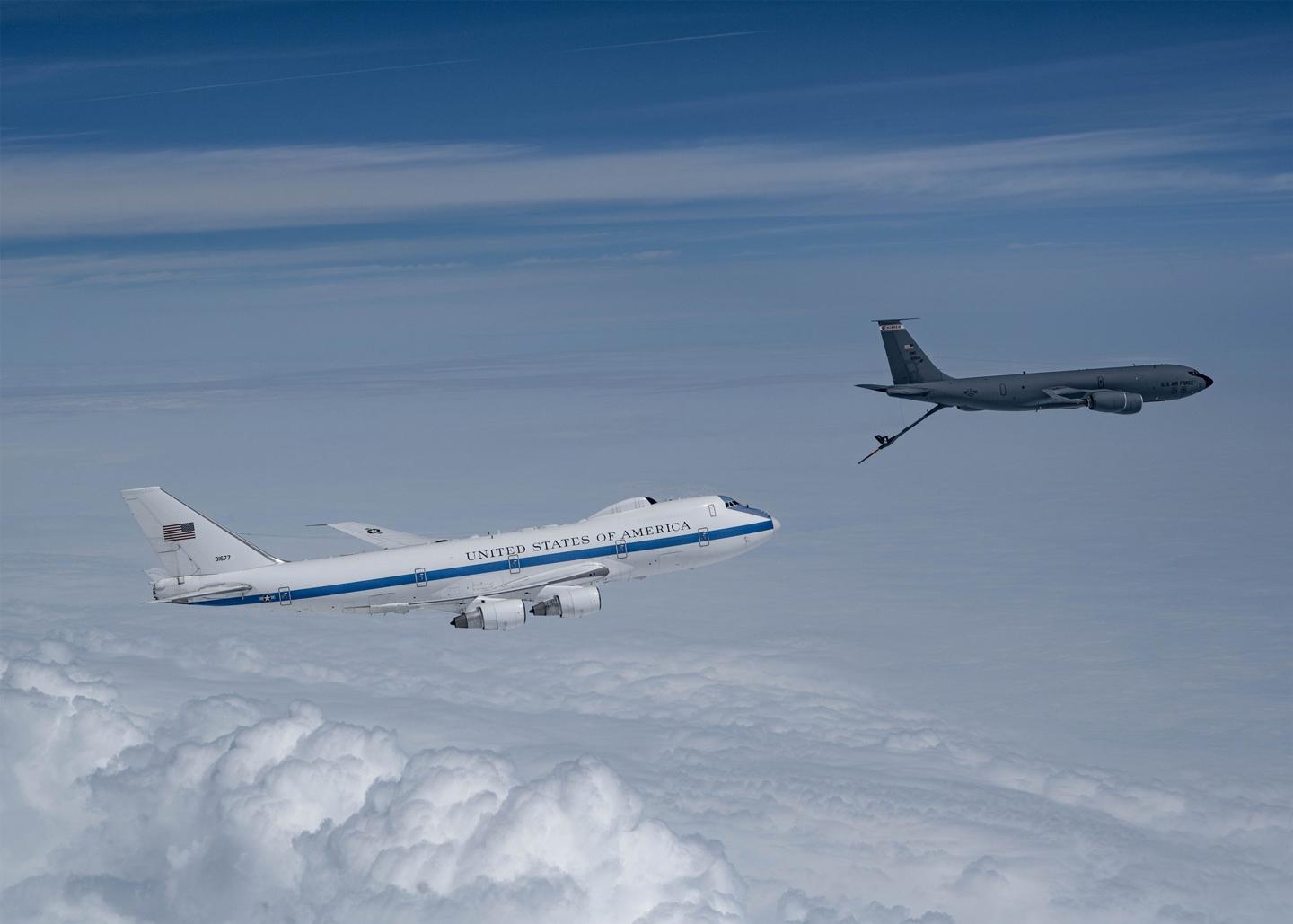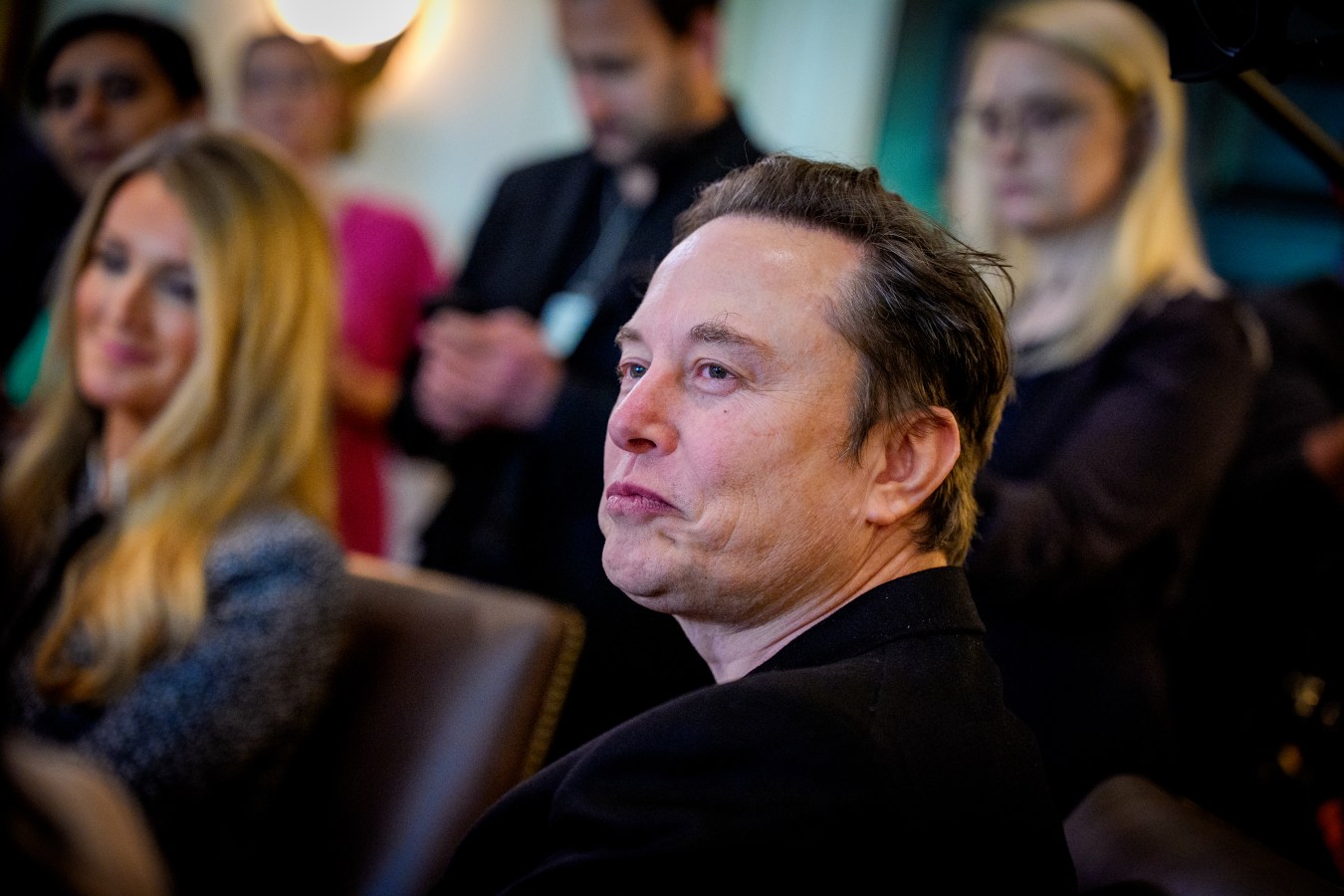Eren Ozmen’s Sierra Nevada Corp. fought for years to land the $13 billion contract to build the next nuclear-ready Doomsday planes. Now the billionaire’s reputation—and her firm’s finances—hinge on whether she can pull off the most difficult manoeuvre in aerospace: executing a complex, top-secret government project on time and on budget.

Sierra Nevada Corp.’s chairwoman and co-owner, Eren Ozmen, grins as she dances alone to the pop-funk beat blaring from the ballroom stage of the Sheraton Denver Downtown Hotel. Clapping her hands in front of a 19-foot LED screen to kick off Sierra Nevada’s annual “Leadership Forum,” Ozmen encourages the 300 or so employees in the audience to get up and move on this early April morning.
The song—“Happy,” by Pharrell Williams—matches her mood: Ozmen is almost certain that the aerospace-defense company she bought with her husband, Fatih, back in 1994 will win the U.S. Air Force’s prestigious contract to develop the next Doomsday planes. These are the hardened airborne command posts reserved for top military and political brass in case of nuclear war or other catastrophes, like an asteroid strike.
Sure enough, SNC lands the deal 22 days later, on April 26. Next year’s song? “I’m thinking ‘We Are the Champions,’ ” Ozmen says.

The contract is worth $13.1 billion over 12 years and is a game-changer for privately held SNC, which booked just $2 billion in revenue last year. For the longest time, the company, which is based outside Reno in Sparks, Nevada, has been firmly entrenched in the middle tier of the aerospace-defense industry, miles away from the industry’s five giants, including Lockheed Martin (revenue: $67.6 billion) and Northrop Grumman ($39.3 billion). Boeing, nearly 40 times as big as SNC at $77.8 billion in sales, was considered a shoo-in for the contract because it designed the four current E-4B—a.k.a. “Doomsday”—planes back in the 1970s. It has had contracts to maintain them ever since—worth some $150 million per year—and its four-engine 747-8 jumbo jets were considered the best models to accommodate the next generation. Whoever won the contract would be retrofitting up to eight used Boeing jets. SNC’s victory was a bit of a surprise. “You would have looked at this and said, ‘Well, yeah, that’ll go to Boeing,’ ” says American Enterprise Institute defense analyst Todd Harrison.
“Taking smart risks is very important,” says Ozmen, who transformed SNC into the country’s biggest female-owned defense contractor by doing just that. “That is a big part of being an entrepreneur. Without that, really, you’re just following what’s happening—you’re not leading.”

An E-4B aircraft (one of the existing Doomsday planes) is about to get refueled mid-flight in May.
Tech. Sgt. Codie Trimble/Air Force
The Survivable Airborne Operations Center contract, as the Doomsday project is called, is a mountain of technical and management challenges. To grab it from Boeing, the Ozmens had to agree to do a minority of the project at a fixed price, bearing cost overruns themselves. That could prove difficult for the ambitious company. After all, the same sort of provision created a $2 billion (and growing) hole in Boeing’s balance sheet for the much-delayed next generation of Air Force One presidential planes. One positive: Unlike that contract, SNC’s fixed pricing structure will be limited to the production phase, meaning it likely won’t have to eat unexpected costs during the more uncertain design stage.
“The incumbent”—read: Boeing, the only other company to bid on the project—“was not so interested in applying innovation, reducing costs or reducing schedule,” Ozmen says. “We are becoming known as a destructive innovator. I think that got us the contract.”
SNC benefited from a bit of lucky timing, too. In addition to its well-publicized problems with its commercial 737s, Boeing is saddled with a swarm of defense contracts that have turned into money pits. In short, the Arlington, Virginia–headquartered giant wasn’t in any mood to bid aggressively, and it got eliminated last fall after submitting an offer that ignored the Air Force’s tough terms, including giving up valuable intellectual property rights.
“If you lose a contract that you were going to lose money on, you actually win,” says Nicolas Owens, a Morningstar aerospace analyst, discussing Boeing’s move. “If I get really good at making four Doomsday planes for the Air Force, what does that qualify me to do? Maybe make four more, but that’s it. No one else is buying these things. It’s not like Jeff Bezos gets one too—I promise.”
But the Doomsday project will elevate the profile and help define the legacy of Ozmen and her husband, both 66, who own 87% of SNC (Eren has a slightly higher stake) and are worth a combined $7.8 billion. At best, it could jump-start a climb toward the aerospace major leagues. At worst, it could end up as a costly catastrophe that sets their growth plans back years.
Just before the pandemic, Fatih, who as CEO focuses on strategy and growth (Eren, who is also president, oversees governance and finances), decided it was time to compete for programs that typically go to “tier one” aerospace-defense companies. “I challenged my executive leadership to think about how we could double the size of SNC in five years,” Fatih says. The team set their sights on the Doomsday contract. The Ozmens began chatting with the Air Force about the project in early 2020, then started investing money. Lots of it. They spent $175 million (and counting) to modernize SNC’s digital infrastructure, with a focus on AI and digital modeling. Then, before they won the contract, they spent over $100 million building a 747-sized hangar near an Air Force base in Dayton, Ohio. It’s nice not to have to answer to public shareholders.

HOW TO PLAY IT
By William Baldwin
Are weapons manufacturers embarrassed about what they do? They rebrand themselves, perhaps to sound more benevolent, and still get scant admiration. So their shares are affordable. Raytheon, now calling itself RTX, makes space-age battle equipment and, for the commercial market, jet engines and cockpit electronics. Its $158 billion market value is 20 times expected earnings. Its counterpart across the Atlantic is Thales, formerly known as Thomson-CSF. That outfit is controlled by the French government and Dassault Aviation, but presumably it is not in the interest of either of those two to cut the dividend or depress the value of the public shares. Thales trades in Paris at 15 times expected earnings.
William Baldwin is Forbes’ Investment Strategies columnist.
The Ozmens are no strangers to tricky aircraft modification. The couple, now U.S. citizens, were born in Turkey, met in Ankara and were graduate students together at the University of Nevada at Reno. Eren paid tuition in part by cleaning offices at SNC, at the time a small defense outfit with fewer than 20 employees. She and Fatih took jobs there as a financial reporting manager and engineering intern, respectively, in the 1980s. After watching the company barely survive a series of financial crises, they decided to borrow against their home and purchase the business for less than $5 million in 1994.
SNC specializes in integrating existing aircraft with new technologies but is better known for its space affiliate, Sierra Space, which the Ozmens spun off in 2021. Sierra is developing its own space plane, the Dream Chaser, set to launch next year, and is working with Jeff Bezos’ Blue Origin on an enormously ambitious plan for a space station to replace the $150 billion ISS, widely considered the most expensive man-made object ever built. Sierra Space has raised $1.7 billion from investors, most recently in September 2023 at a $5.3 billion valuation.

Two Air Force commanders start the engines on an E-4B Doomsday plane for a training flight in May.
Justin Oakes/Air Force
The four E-4B Doomsday planes are designed to provide “constant, unbroken survival communications,” says Col. David Leaumont, who commands the fleet, which also regularly transports the secretary of defense. “We do it all the time. It’s not just on bad days.” The planes’ 40-plus distinct communications systems are built to withstand the electromagnetic pulse that would instantly fry nearby electronics in the event of a nuclear attack. These planes, which have been flying for 50 years, cost $140,000 per hour to operate, can hold up to 111 people each, have conference rooms and battle stations and can be airborne with just a few minutes’ notice—but they are approaching the end of their useful life. SNC is tasked with getting the next generation flying by 2036.
Boeing still owns the design data for the original plane, meaning SNC will have to play nice, and likely pay its bigger rival to consult on issues such as metal fatigue or the safest way to reattach a part. (SNC expects minimal contact with Boeing’s intellectual property due to its scanning technology that will create a “digital twin” of the plane.) And SNC will never see this sort of revenue stream itself. As part of the deal, it has agreed not to retain any of the IP from the project. Instead, the Air Force will own it, meaning it could easily choose a new contractor to maintain or upgrade the systems in the future. This “open systems” approach is unusual in the highly consolidated defense sector, where firms often hold onto IP to compel the government to hire them for decades of lucrative maintenance and consulting work.
“This is how industry evolves,” says Loren Thompson, a longtime aerospace analyst. “There’s a new player that operates in nontraditional ways and is willing to take a chance. And there’s an old player that balks at having to match the terms the newcomer is offering.”
Given that this is SNC’s largest-ever contract, Ozmen says the Air Force will provide extensive guidance: “They understand that this is the first time SNC will be doing something like this. They want us to succeed.” SNC will also have help from experienced subcontractors such as Lockheed and General Electric. And it has decades of practice with classified and bespoke aircraft modification projects. Says Morningstar’s Owens, “It might actually be a perfect fit for them.”
SNC has already hit a few early program milestones, including constructing the second of at least four 90,000-square-foot hangars in Dayton and flying the first of the five used 747-8s it purchased from Korea Airlines for $675 million to the new facilities. The four other planes are still airborne, hauling on daily flights between Seoul and Atlanta, for instance, passengers who are utterly unaware they’re aboard a plane that could one day direct a U.S. nuclear response.
If all goes well, SNC is hoping this big-name contract will help it amass a legion of others, including the Navy’s version of the Doomsday plane, to be announced in January, for which it’s competing against Northrop Grumman. It’s already winning some notable contracts, including a $1 billion pact to develop long-range spy planes for the Army. The goal is to hit $4 billion in revenue by 2025 and triple its size by 2030.
“Once you prove that you can execute a program this size, you’re going to get 10 more,” Ozmen says. “It’s not gonna be business as usual for us.”
Adds Cai Von Rumohr, an aerospace analyst at TD Cowen: “They clearly have moved up the food chain.”

Listicle
JUMBO JET-SETTERS
A Gulfstream is much too small for the U.S. military’s Doomsday planes. Those are going to be converted 747-8s, big enough to seat more than 400 passengers. But the secretary of defense isn’t the only one who has upgraded to a whole lot more legroom. Here are a few celebrities and billionaires who fly private on their own commercial airliners.
John Travolta
Boeing 707 | First flight: 1957 | Capacity: 181 passengers
The Grease star is licensed to fly at least nine jets, including the 707, considered the first successful commercial jetliner. Travolta picked up his in 1998 and flew it around the world as an ambassador for Qantas Airlines. He donated it to Australia’s HARS Aviation Museum in 2017.
Donald Trump
Boeing 757-200 | First Flight: 1982 | Capacity: 228 passengers
Trump bought his “Trump Force One” plane from the late Microsoft billionaire Paul Allen in 2010, then Trumpified it with gold seat belt buckles, Trump family crests and a 57-inch flatscreen preloaded with 1,000 of his favorite films (3:10 to Yuma, An Affair to Remember, Air Bud).
Prince Alwaleed bin Talal Al-Saud
Boeing 747-400 | First Flight: 1988 | Capacity: 416 passengers
The Saudi royal investor has a jet fit for a king (er, prince). His ride is tricked out with oversized conference tables, enough seating for an entourage of courtiers and a golden throne (really). He has been known to fly the Al Hilal Saudi Football Club around on the airborne palace, too.
This article was originally published on forbes.com and all figures are in USD.


